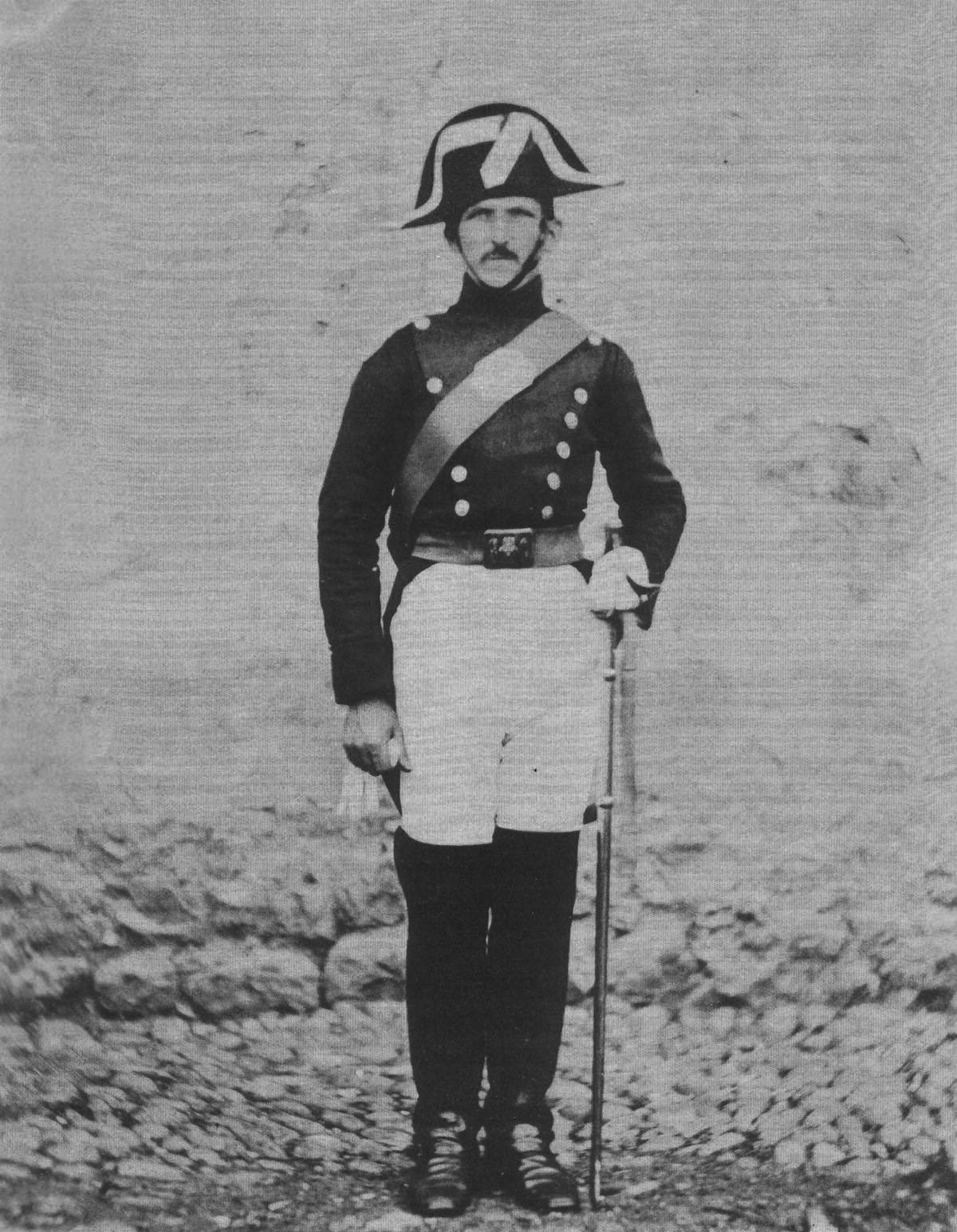|
Anarchist Insurrection Of Alt Llobregat
The Anarchist insurrection of Alt Llobregat, Spain was a revolutionary general strike which took place in January 1932, principally organized by Confederación Nacional del Trabajo (CNT) unions in the mining and textile sectors.''Diccionari d'Història de Catalunya'', p. 35, ed. 62, Barcelona, 1998, It was the first of the three insurrections carried out by the CNT during the time of the Second Spanish Republic, followed by the anarchist insurrections of January and December 1933. History The outbreak of the revolutionary strike was due to the economic situation in the area and the country, and the expectations of radical social change since the early days of the republican era in many sectors of workers. In Catalonia, the most radical sectors of the anarchists controlled the CNT, which coincided with an increase in social conflict between workers and the republican state. Preceded by the Castilblanco events and the Arnedo events, the revolt began on 19 January 1932, when t ... [...More Info...] [...Related Items...] OR: [Wikipedia] [Google] [Baidu] |
Berguedà
Berguedà () is an inland comarca (county) in Catalonia, Spain, lying partly in the Pyrenees and Pre-Pyrenees, and partly in the Catalan Central Depression. Geography The northern half of Berguedà, known as Alt Berguedà (“Upper Berguedà”), consists of the upper Llobregat Valley and the mountainous areas surrounding it. Its northern border is a veritable mountain barrier: Berguedà is separated from Cerdanya by a chain of 2,000-meter peaks. These include the mountain ranges of Cadí, Moixeró, Puig d' Alp and Puigllançada. In this area the population is centered mainly in the Llobregat Valley and the valleys of the rivers Bagà, Bastareny and Saldes. To the east are the mountain ranges of Catllaràs and Rasos de Tubau, to the west the high ranges of Pedraforca, Verd, Ensija and Rasos de Peguera. The more populous Baix Berguedà ("Lower Berguedà") is the southern part of the ''comarca''. It lies along the foothills of the Pyrenees, transitioning into the plains o ... [...More Info...] [...Related Items...] OR: [Wikipedia] [Google] [Baidu] |
Sallent
Sallent () is a municipality in the comarca of Bages, Province of Barcelona, in the Autonomous Community of Catalonia, Spain. The river Llobregat The Llobregat () is the second longest river in Catalonia, Spain, after the Ter. It flows into the Mediterranean south of the city of Barcelona. Its name could have originated in an ancient Latin word meaning 'dark', 'sorrowful' or 'muddy', or ... divides the municipality into two halves. Its main resources are mining and industry. It was the birthplace of Saint Anthony Mary Claret (1807–1870) Demography According to Spanish census data, this is the population of Sallent in recent years. References External linksLa Disputació de Barcelona - Municipal Directory: ''Sallent'' Government data pages Municipalities in Bages {{Barcelona-geo-stub ... [...More Info...] [...Related Items...] OR: [Wikipedia] [Google] [Baidu] |
Barcelona
Barcelona ( , , ) is a city on the coast of northeastern Spain. It is the capital and largest city of the autonomous community of Catalonia, as well as the second most populous municipality of Spain. With a population of 1.6 million within city limits,Barcelona: Población por municipios y sexo – Instituto Nacional de Estadística. (National Statistics Institute) its urban area extends to numerous neighbouring municipalities within the and is home to around 4.8 million people, making it the [...More Info...] [...Related Items...] OR: [Wikipedia] [Google] [Baidu] |
Castel De Cabra
Castel de Cabra is a municipality in Cuencas Mineras, province of Teruel, Aragon, Spain. According to the 2010 census the municipality has a population of 140 inhabitants.Instituto Nacional de Estadística (Spain) Its postal code is 44706. The town is located on the northern side of Sierra de San Just. Road N-211 crosses Castel de Cabra. See also *Cuencas Mineras *List of municipalities in Teruel This is a list of the municipalities in the province of Teruel in the autonomous community of Aragon, Spain. There are 236 municipalities in the province. See also List of Aragonese comarcas. See also * Geography of Spain *List of cities in ... References External links Castel de Cabra, CAI Aragon Municipalities in the Province of Teruel {{Teruel-geo-stub ... [...More Info...] [...Related Items...] OR: [Wikipedia] [Google] [Baidu] |
Civil Guard (Spain)
The Civil Guard ( es, Guardia Civil, link=no; ) is the oldest law enforcement agency in Spain and is one of two national police forces. As a national gendarmerie force, it is military in nature and is responsible for civil policing under the authority of both the Ministry of the Interior and the Ministry of Defence. The role of the Ministry of Defence is limited except in times of war when the Ministry has exclusive authority. The corps is colloquially known as the ' (reputable). In annual surveys, it generally ranks as the national institution most valued by Spaniards, closely followed by other law enforcement agencies and the armed forces. It has both a regular national role and undertakes specific foreign peacekeeping missions and is part of the European Gendarmerie Force. As a national gendarmerie force, the Civil Guard was modelled on the French National Gendarmerie and has many similarities. As part of its daily duties, the Civil Guard patrols and investigates crimes in ... [...More Info...] [...Related Items...] OR: [Wikipedia] [Google] [Baidu] |
Alcorisa
Alcorisa is a municipality in the province of Teruel, Aragon, Spain. According to the 2018 censusInstituto Nacional de Estadística (Spain) the municipality has a population of 3,276 inhabitants. Alcorisa is located right by the N-211 road, 13 km to the SW of Calanda. This town is part of the Ruta del tambor y el bombo. See also * Bajo Aragón *List of municipalities in Teruel This is a list of the municipalities in the province of Teruel in the autonomous community of Aragon, Spain. There are 236 municipalities in the province. See also List of Aragonese comarcas. See also *Geography of Spain *List of cities in Sp ... References External links Bajo Aragón Comarca [Baidu] |
Aragon
Aragon ( , ; Spanish and an, Aragón ; ca, Aragó ) is an autonomous community in Spain, coextensive with the medieval Kingdom of Aragon. In northeastern Spain, the Aragonese autonomous community comprises three provinces (from north to south): Huesca, Zaragoza, and Teruel. Its capital is Zaragoza. The current Statute of Autonomy declares Aragon a '' historic nationality'' of Spain. Covering an area of , the region's terrain ranges diversely from permanent glaciers to verdant valleys, rich pasture lands and orchards, through to the arid steppe plains of the central lowlands. Aragon is home to many rivers—most notably, the river Ebro, Spain's largest river in volume, which runs west–east across the entire region through the province of Zaragoza. It is also home to the highest mountains of the Pyrenees. , the population of Aragon was , with slightly over half of it living in its capital city, Zaragoza. In 2020, the economy of Aragon generated a GDP of million, which re ... [...More Info...] [...Related Items...] OR: [Wikipedia] [Google] [Baidu] |
Valencian Community
The Valencian Community ( ca-valencia, Comunitat Valenciana, es, Comunidad Valenciana) is an autonomous community of Spain. It is the fourth most populous Spanish autonomous community after Andalusia, Catalonia and the Community of Madrid with more than five million inhabitants.Instituto Nacional de Estadística, Madrid, 2020. Its homonymous capital Valencia is the third largest city and metropolitan area in Spain. It is located along the Mediterranean coast on the east side of the Iberian Peninsula. It borders with Catalonia to the north, Aragon and Castilla–La Mancha to the west, and Murcia to the south, and the Balearic Islands are to its east. The Valencian Community consists of three provinces which are Castellón, Valencia and Alicante. According to Valencia's Statute of Autonomy, the Valencian people are a ''nationality''. Their origins date back to the 1238 Aragonese conquest of the Taifa of Valencia. The newly-founded Kingdom of Valencia enjoyed its own legal entit ... [...More Info...] [...Related Items...] OR: [Wikipedia] [Google] [Baidu] |
Manuel Azaña
Manuel Azaña Díaz (; 10 January 1880 – 3 November 1940) was a Spanish politician who served as Prime Minister of the Second Spanish Republic (1931–1933 and 1936), organizer of the Popular Front in 1935 and the last President of the Republic (1936–1939). He was the most prominent leader of the Republican cause during the Spanish Civil War of 1936–1939. A published author in the 1910s, he stood out in the pro-Allies camp during World War I. He was sharply critical towards the Generation of '98, the reimagination of the Spanish Middle Ages, Imperial Spain and the 20th century yearnings for a praetorian refurbishment of the country. Azaña followed instead the examples of the French Enlightenment and the Third French Republic, and took a political quest for democracy in the 1920s while defending the notion of homeland as the "democratic equality of all citizens towards the law" that made him embrace republicanism. After the Proclamation of the Second Spanish Republic ... [...More Info...] [...Related Items...] OR: [Wikipedia] [Google] [Baidu] |
Manresa
Manresa () is the capital of the Comarca of Bages, located in the geographical centre of Catalonia, Spain, and crossed by the river Cardener. It is an industrial area with textile, metallurgical, and glass industries. The houses of Manresa are arranged around the basilica of Santa Maria de la Seu. Saint Ignatius of Loyola stopped to pray in the town on his way back from Montserrat in 1522. He also read in solitude in a cave near the town for a year, which contributed to the formulation of his Spiritual Exercises. As such, the town is a place of pilgrimage for Catholics. It is believed the comarcal name "Bages" comes from a corruption of the Latin "Bacchus" due to the extensive production of wine in the area. The wine was produced from grapes grown mainly in terraced vineyards, and many of these old terraces can be seen today. Wine ceased to be the main product of the area as a consequence of phylloxera, but is still a very important part of the Manresa/Bages economy. During the ... [...More Info...] [...Related Items...] OR: [Wikipedia] [Google] [Baidu] |
Súria
Súria () is a Municipalities of Spain, municipality in the Comarques of Catalonia, ''comarca'' of the Bages in Catalonia, Spain. It is situated in the valley of the Cardener river between Manresa and Cardona, Spain, Cardona. The area is best known for its deposits of potassium salt (chemistry), salts, which are exploited commercially and exported with trucks directly to all around the European continent or served to Martorell to receive chemical treatment by a dedicated railway line (there are passenger rail services between Martorell and Manresa, but there are none between Manresa and Súria, separated only by 14.3 km of distance). The Old Town, at the foot of the castle, has preserved much of its medieval structure. The municipality is linked to Manresa and to Cardona and Solsona, Lleida, Solsona by the C-1410 road. Demography References * Panareda Clopés, Josep Maria; Rios Calvet, Jaume; Rabella Vives, Josep Maria (1989). ''Guia de Catalunya'', Barcelona: Caixa de ... [...More Info...] [...Related Items...] OR: [Wikipedia] [Google] [Baidu] |



